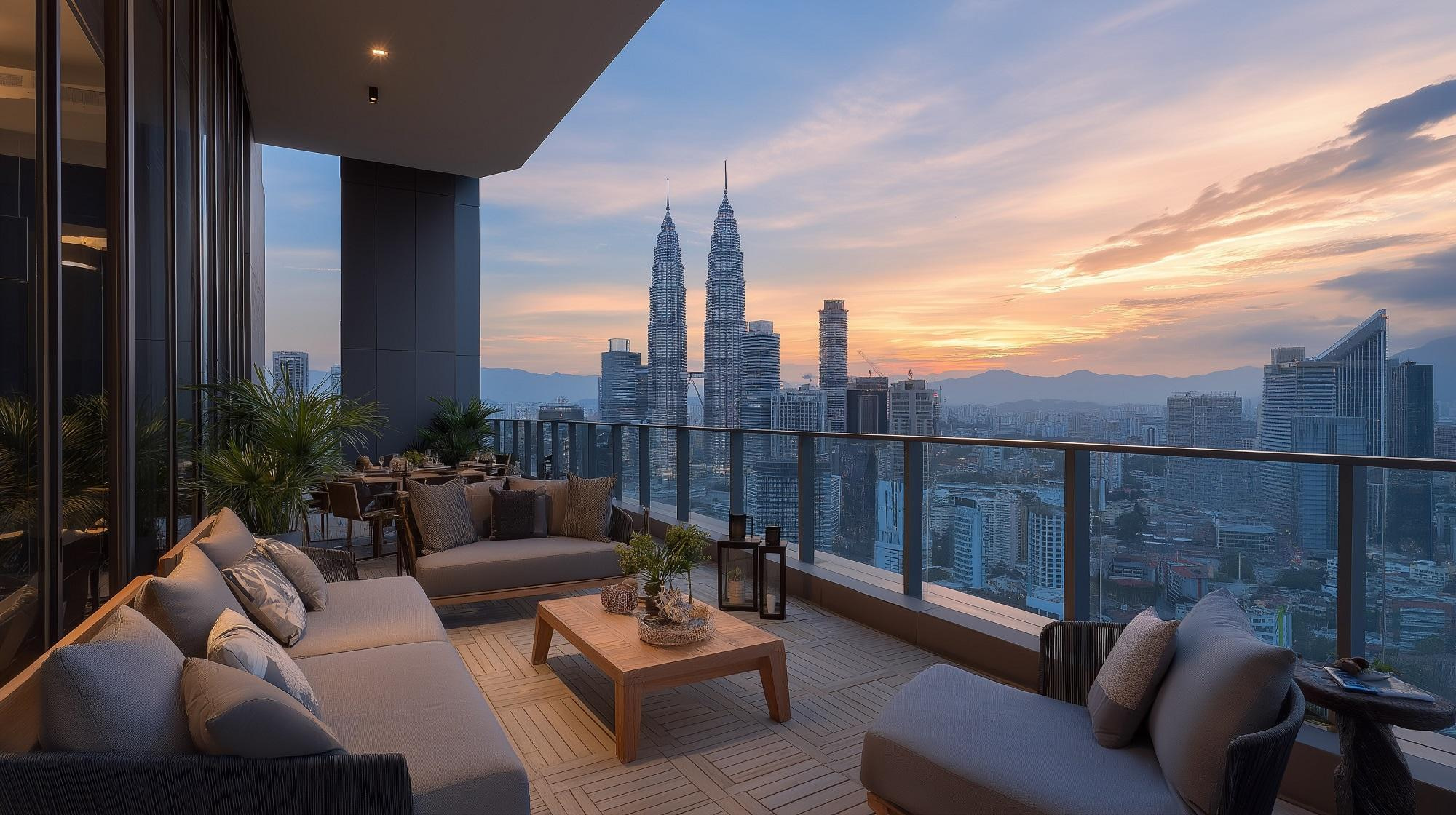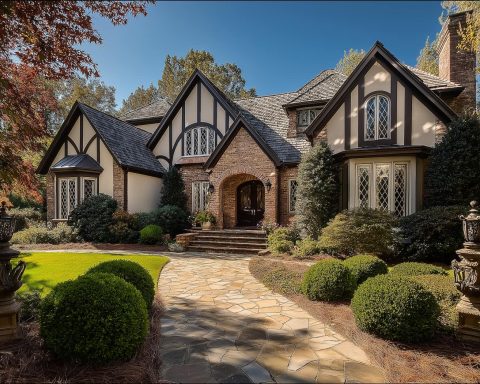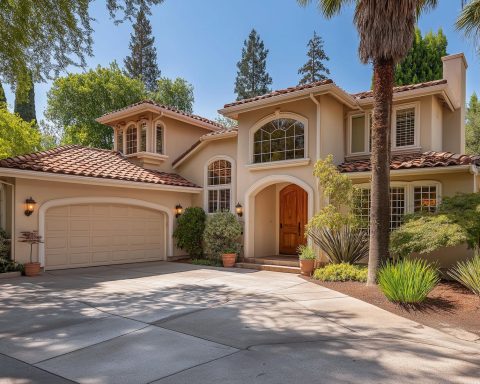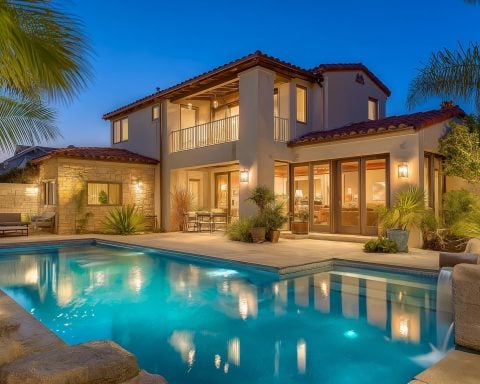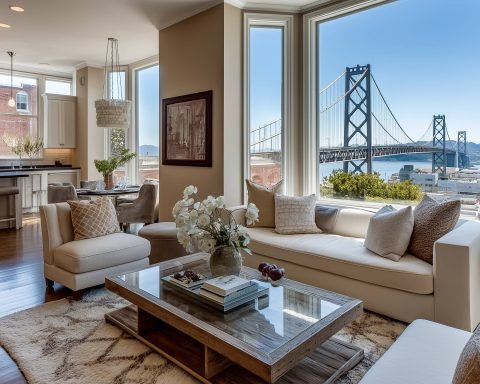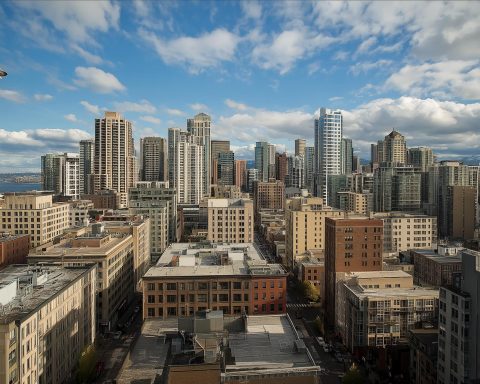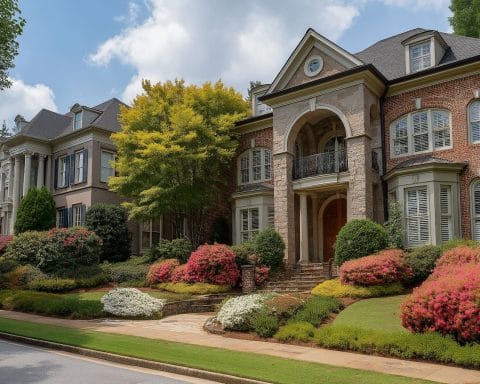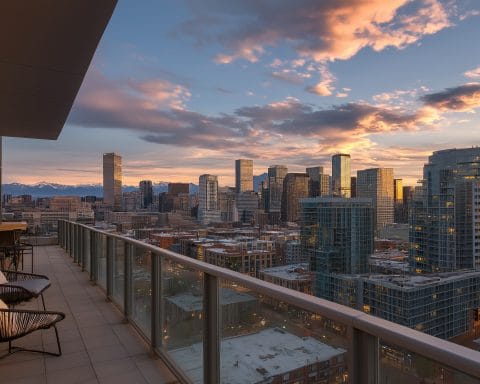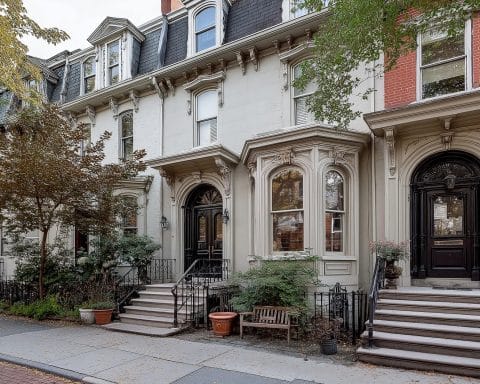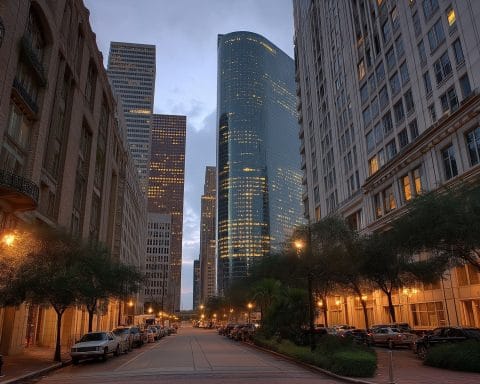Kuala Lumpur’s property market has entered 2025 with resilience and broad-based growth across key segments despite a mixed global economic backdrop theedgemalaysia.com. Both residential and commercial sectors are stabilizing after the pandemic, with steady demand and modest price increases observed in 2024. Looking ahead, analysts expect moderate growth in property values (on the order of a few percent annually) amid strong fundamentals – supported by new infrastructure, demographic demand, and government incentives – but tempered by oversupply in certain segments and global economic headwinds bambooroutes.com theedgemalaysia.com. This report provides a comprehensive analysis of Kuala Lumpur’s real estate market in 2025 and the coming years, covering residential and commercial trends, price movements, major developments, policies, foreign investment climate, key locales, and potential risks.
Residential Real Estate Sector
Kuala Lumpur’s residential property market showed encouraging stability through 2024 into early 2025. Demand has remained healthy across both mass-market and prime segments, even as buyers retain a selective, “buyer’s market” approach amid ample supply theedgemalaysia.com theedgemalaysia.com. New project launches have seen decent absorption: prime condominium launches in the city achieved take-up rates of around 30–50% (and even up to 70% sold in some projects) despite developers moderating the launch pipeline theedgemalaysia.com. This indicates that well-located, well-managed properties with modern lifestyle features are still finding buyers, aligning with a noted shift in preference toward higher-quality homes that meet evolving needs theedgemalaysia.com.
Price trends: Overall housing prices in Greater KL have been stable to gently rising. The Malaysian House Price Index (which includes KL) stood at 225.3 in Q1 2025, about 0.9% higher year-on-year propertygenie.com.my. In Kuala Lumpur city, average house prices are the highest in the country – about RM 794,000 (US$180k) as of end-2024 globalpropertyguide.com – reflecting KL’s position as the nation’s priciest market. However, growth has been modest: for instance, prime residential values in KL edged up only 0.2% in the year to Q1 2025, showing stability but lack of rapid upside theedgemalaysia.com. This subdued performance in the luxury segment suggests a holding pattern, with resilience but no broad-based boom in prices theedgemalaysia.com. Meanwhile, mid-market and affordable homes have seen slightly stronger growth due to sustained local demand. Across Klang Valley, residential prices appreciated ~3.2% in 2024, on average edgeprop.my, with certain submarkets far outperforming: for example, serviced apartments in the upscale Mont’Kiara/Desa ParkCity area (northwest KL) surged nearly 18% in price last year edgeprop.my edgeprop.my (reaching about RM664 per sq ft), while two-storey terraced houses in both the Batu district (Mont’Kiara vicinity) and City Centre (KLCC/Bukit Bintang) jumped roughly 12% in value edgeprop.my. These spikes underscore that specific high-demand neighborhoods and property types (especially those with rental appeal like serviced apartments) are leading the recovery. By contrast, some areas with abundant supply saw flatter performance – e.g. average condo resale prices in Mont’Kiara dipped slightly (−0.9% y‑o‑y) by 3Q2024 even as rents there rose theedgemalaysia.com theedgemalaysia.com, indicating yields improved.
Rental market: The rental sector in KL’s prime areas has firmed up alongside the return of expatriates and students post-pandemic. Average rents in the city’s core have risen in the low-single digits; for instance, expatriate-friendly Mont’Kiara saw rents climb about 4.3% y-o-y (to ~RM3,150 per month for a two-bedroom unit) by late 2024 theedgemalaysia.com theedgemalaysia.com. Kuala Lumpur’s overall average rent hit roughly RM2,863 per month in late 2024, reflecting a ~5% quarterly increase as foreign professionals flowed back into the city bambooroutes.com bambooroutes.com. Demand has been especially strong for serviced apartments and co-living units in central, transit-accessible locations, which offer flexibility for young professionals theedgemalaysia.com. Notably, serviced residences in KL are seeing higher rental growth and yields than ordinary condos due to their amenities and management – a trend JLL expects to continue in 2025 edgeprop.my edgeprop.my. Overall, the rental market stabilization, combined with Malaysia’s relatively affordable urban rents by regional standards, is underpinning steady occupancy in city-center residential properties.
Supply and construction: On the supply side, Kuala Lumpur has a robust development pipeline, which is both a sign of confidence and a source of oversupply concerns. Residential construction picked up pace in 2024–2025: new housing starts in Malaysia jumped over 30% year-on-year in early 2025, and developers launched about 12,500 units in Q1 2025 – more than double the new launches a year prior propertygenie.com.my propertygenie.com.my. In Kuala Lumpur alone, 5,589 new units were completed in just Q3 2024 (a 10.5% y-o-y increase) and incoming supply hit 55,600 units as of that quarter theedgemalaysia.com theedgemalaysia.com. Many of these new projects target the mid-market: roughly 65% of new launches were priced below RM500k, aligning with policymakers’ push for affordable homes propertygenie.com.my propertygenie.com.my. Despite this influx, the unsold housing “overhang” in Kuala Lumpur has actually improved slightly – unsold completed units in the city fell to about 8,235 units by late 2024 (down from 8,696 a year prior) theedgemalaysia.com, and the overhang of service apartments nationwide also shrank (−6.7% y‑o‑y in Q1 2025) propertygenie.com.my. This suggests that while construction is booming, demand (especially for affordable and well-located units) is absorbing new stock reasonably well, preventing a large glut. Still, Kuala Lumpur’s market remains buyer-friendly, with ample choices keeping price growth in check theedgemalaysia.com. Developers are cautious not to flood the high-end segment and have shown discipline in pricing and phasing projects, which supports long-term sustainability even if it means slower short-term price gains theedgemalaysia.com.
Commercial Real Estate Sector
Kuala Lumpur’s commercial property sectors – spanning offices, retail, industrial, and hospitality – are collectively on a path of gradual recovery and adaptation. Broadly, 2024 brought improvements in occupancy and sentiment across these segments, although performance is uneven and legacy oversupply still weighs on certain submarkets theedgemalaysia.com klpropertytalk.com. The theme for 2025 is one of flight to quality: tenants and investors are gravitating toward newer, better-quality assets (especially those with green and smart features), while older properties face pressure to reinvent. Below is a breakdown of major commercial sectors:
Office Market
After several years of soft conditions, Kuala Lumpur’s office market is showing tentative signs of strengthening – albeit within a very competitive landscape. As of Q1 2025, the overall office vacancy in KL is on a downward trend, with the citywide vacancy rate improving to ~16.1% (from the high teens previously) theedgemalaysia.com. In the city center (CBD) specifically, vacancy stood around 19–20%, whereas the “KL fringe” areas (decentralized office clusters) had a much lower vacancy near 8.5% theedgemalaysia.com. This reflects strong take-up in emerging office hubs outside the traditional downtown. Notably, the new Tun Razak Exchange (TRX) financial district is a magnet for tenants: financial institutions and tech firms are driving office demand, especially in TRX’s state-of-the-art towers, which boast advanced tech infrastructure and ESG credentials theedgemalaysia.com. For example, the Exchange 106 tower in TRX (one of Southeast Asia’s tallest) and the soon-to-open Merdeka 118 tower near Chinatown are commanding Kuala Lumpur’s highest office rents, roughly RM10–15 per sq ft per month – significantly above older building rents – and each has achieved around 70% lease commitments by early 2025 theedgemalaysia.com theedgemalaysia.com. The official launch of TRX as an International Financial Centre in Feb 2024 has further boosted interest, with relocation incentives attracting both local and multinational companies to the precinct theedgemalaysia.com.
Flight to quality: The influx of new Grade A green buildings is reshaping the market. About 6.1 million sq ft of new prime offices are coming on stream in KL/Klang Valley with 77% of that being green-certified space theedgemalaysia.com, reflecting demand for sustainable and tech-enabled workplaces. Buildings like Menara Merdeka 118, The Exchange 106 (TRX), The MET Corporate Towers (KL Metropolis), and Aspire Tower (KL Eco City) are luring tenants from older offices by offering large floor plates, energy efficiency, and superior connectivity klpropertytalk.com theedgemalaysia.com. Occupancy has notably improved at the high end: many new towers report strong pre-leasing (e.g. Merdeka 118 had ~70% pre-commitment before opening theedgemalaysia.com), even as they add significant supply. Consequently, some older Grade-A buildings in the traditional CBD are struggling to retain tenants and are seeing occupancy and rents slip unless they upgrade theedgemalaysia.com. Landlords of dated offices are now considering renovations or even repurposing – recent examples include older office towers converted into hotels (e.g. Holiday Inn Express KL from Menara ING, and WOLO Hotel from Wisma KLIH) theedgemalaysia.com. Market analysts note that location alone no longer guarantees success; tenants prioritize modern, flexible, ESG-compliant spaces with good transit links and amenities theedgemalaysia.com theedgemalaysia.com.
Despite these positive trends in absorption of quality space, oversupply remains a key challenge. Following a wave of completions in 2024 (including Merdeka 118, Pavilion Damansara Heights towers, Menara Felcra, etc.), the Klang Valley office stock reached ~125.5 million sq ft (of which roughly 72% is in KL proper) theedgemalaysia.com. Prime offices account for ~62 million sq ft (nearly half of supply) theedgemalaysia.com. With more projects in the pipeline (e.g. at TRX and elsewhere), the market will remain tenant-favorable in the near term. Landlords are adopting more aggressive leasing strategies (flexible lease terms, incentives) to shore up occupancy theedgemalaysia.com theedgemalaysia.com. Hybrid work arrangements also mean companies are optimizing space, further moderating demand growth. Still, there is optimism that the flight-to-quality will continue to “right-size” the market: as firms relocate to new offices, secondary stock will either find new uses or eventually redevelop, helping rebalance supply. In the interim, office rents are broadly stable; top-tier offices in KLCC and TRX fetch around RM10–RM12 psf (gross) theedgemalaysia.com theedgemalaysia.com, while older buildings may command only half that. Yields remain attractive regionally, and investment sentiment is cautiously improving given Malaysia’s stable growth and the prospect of lower interest rates by 2025–2026 (which would reduce financing costs for investors) reuters.com reuters.com.
Retail Property Market
Kuala Lumpur’s retail real estate sector has been rebounding on the back of revived consumer spending and the absence of movement restrictions. Shopping mall occupancy in Klang Valley edged up to about 79.0% in early 2025, a slight improvement from 78.8% in late 2024 propertygenie.com.my propertygenie.com.my, signaling that foot traffic and tenant demand are returning. Prime, well-managed malls in KL (especially those with strong entertainment/F&B offerings) have maintained high occupancy and even saw new-to-market brands opening stores in 2024. For instance, the food & beverage segment led leasing activity, with international entrants like Japan’s Sushiro sushi chain, Korea’s Super Matcha, and China’s Luckin Coffee launching outlets in KL theedgemalaysia.com. New fashion and specialty retailers (e.g. brands like JNBY, KaraKu, Semir) also debuted, choosing Kuala Lumpur as their gateway into Malaysia theedgemalaysia.com. This reflects a revitalized retailer interest in the city, particularly in locations popular with a young, urban demographic.
Several major retail developments have come online or are imminent, adding fresh supply but also drawing excitement. Notably, The Exchange TRX mall – a huge upscale shopping center in the TRX district – opened in late 2023, introducing over 500 retail outlets and marking a new retail nucleus in the city straitstimes.com straitstimes.com. Its successful launch (with strong footfall and luxury tenant lineup) is expected to catalyze retail activity in the surrounding area. Additionally, the iconic Merdeka 118 tower will feature a 7-storey “118 Mall” slated to open by 2024–2025, further expanding the retail landscape in downtown KL reddit.com themalaysianreserve.com. In suburban areas, expansions like the IOI City Mall Phase 2 in Putrajaya (opened 2022) and the Alamanda Mall extension (Putrajaya, opened 2024) have added significant floor space and new attractions such as an adventure park theedgemalaysia.com, drawing shoppers from the city. Supply growth bears watching – the completion of these large malls means retail space per capita is rising, and older or weaker malls may feel the pinch.
Indeed, older shopping centers in KL continue to struggle and search for a niche in the evolving retail landscape theedgemalaysia.com. Consumers are gravitating to experiential retail destinations; malls that are dated or lack unique tenants are facing declining occupancy. Some have turned to repositioning (for example, Semua House in KL was rejuvenated in 2024 theedgemalaysia.com) or changing their tenant mix to focus on entertainment, fitness, or outlet concepts. Overall, retail rents in prime Kuala Lumpur malls have been relatively flat but stable, with landlords offering incentives to secure key tenants. The outlook for 2025 is cautiously optimistic: retail sales are growing (~3.9% y-o-y forecast for 2024–25) and tourism is recovering, which should support mall traffic theedgemalaysia.com. As long as consumer confidence holds, KL’s top retail properties are expected to retain their value, while secondary malls will need ongoing adaptation. Investors remain selective – well-located retail assets with sustainable shopper catchments are sought after, whereas poorly performing malls see limited interest or are candidates for redevelopment.
Industrial and Logistics Property
The industrial and logistics real estate segment is a clear bright spot in Greater Kuala Lumpur’s property market. The shift to e-commerce and the growth of supply-chain, high-tech manufacturing, and data industries have fueled strong demand for modern industrial facilities. By Q1 2025, KL and its surroundings (Selangor, etc.) experienced record-low warehouse vacancies – the logistics vacancy rate fell to just 4.0% (down from 4.8% in late 2024) amid steady absorption and sparse new supply theedgemalaysia.com theedgemalaysia.com. In 2024, only a handful of new warehouses (around five major facilities totaling ~4 million sq ft) were completed in Malaysia theedgemalaysia.com, and they were quickly taken up by tenants in sectors like electronics, automotive, 3PL logistics, and medical supplies. Rent for prime warehouses has thus inched up, and investors (including institutional funds) have been actively acquiring logistics assets or developing new ones, drawn by yields and the sector’s growth prospects.
Industrial transactions remained buoyant – about 2,002 industrial property deals (worth RM7.11 billion) took place nationwide in Q1 2025, slightly up from the previous year klpropertytalk.com. The Klang Valley, being Malaysia’s central distribution hub, captures a significant share of this. Key industrial zones around KL (Shah Alam, Subang, Klang, Semenyih) are near capacity, and industrial land values have appreciated steadily. Notably, data centers have emerged as a hot segment: global tech giants like Google and Amazon Web Services, along with regional players, are investing billions to establish data center campuses in the greater KL area theedgemalaysia.com. Several new high-tech industrial parks around KL are being positioned for AI, semiconductor, and green-tech industries, often featuring green building certifications and robust power/network infrastructure theedgemalaysia.com.
Government support has also been notable – authorities approved new industrial park developments (including in other states, to decentralize some growth) and offer incentives for manufacturing and logistics investments. For instance, the East Coast Rail Link (ECRL) under construction and other transit projects will improve connectivity and could spur new logistics hubs on KL’s fringes theedgemalaysia.com theedgemalaysia.com. With e-commerce still expanding and firms reconfiguring supply chains, demand for warehouses and distribution centers is expected to remain solid. The main concern is shortage of ready-built modern facilities; developers are thus actively constructing warehouses, though high construction costs temper the pace. Overall, KL’s industrial property sector is forecast to be one of the best performers in 2025, with low vacancy and stable rental growthstarproperty.my edgeprop.sg. Capital values for prime logistics assets have been rising, and this trend should continue given the yield compression and strong investor appetite for industrial REITs and portfolios.
Hospitality and Others
The hospitality sector in Kuala Lumpur is on an upswing as tourism and business travel recover. Hotel occupancy and room rates improved throughout 2023–24, and a wave of new luxury hotel openings is slated for the next few years. Within KL alone, at least 61% of incoming hotel rooms are five-star category theedgemalaysia.com. High-profile launches include the Park Hyatt Kuala Lumpur (atop Merdeka 118, opened 2023) and the upcoming SO/ Sofitel at Oxley Towers on Jalan Ampang theedgemalaysia.com, among others. These additions will raise competition at the top end, but also solidify KL’s offering for high-end tourists and business travelers. The government’s push to boost tourist arrivals (e.g. targeted campaigns in 2025) is expected to support the hotel market.
Other segments like development land in KL remain active – large tracts for redevelopment (especially brownfield sites or government land releases) continue to attract developer interest, given the city’s growth potential. For example, significant land deals in 2024 involved parcels being prepared for new mixed-use projects (often transit-oriented). However, with so much ongoing construction, developers are mindful of phasing.
Overall, commercial real estate in Kuala Lumpur is recovering, but it faces a two-tier market dynamic: new, high-quality assets are capturing demand and achieving better performance, whereas older properties need repositioning. Investors are most bullish on logistics and prime offices, cautiously optimistic on prime retail and hotel, and more critical on aging assets or speculative developments.
Property Price Trends and Forecasts by Segment
Residential property prices in Kuala Lumpur are expected to continue on a moderate growth trajectory in 2025 and the next few years. After a modest rise of ~3–4% in 2024 for the Klang Valley on average edgeprop.my bambooroutes.com, most analysts foresee annual price increases in the low-to-mid single digits going forward – roughly 2% to 5% per year in 2025–2026 at the national level bambooroutes.com bambooroutes.com. Kuala Lumpur, being a prime market, could see the upper end of that range if demand holds, though significant double-digit jumps are not anticipated in the near term bambooroutes.com. Rising construction costs (materials and labor) are putting upward pressure on new home prices, and developers are expected to pass on some of these costs bambooroutes.com edgeprop.my. Well-located new launches in KL may thus be priced higher, but affordability constraints will cap how much mass-market prices can climb. Industry experts describe the price outlook as “measured” growth – not a boom, but steady gains in line with economic growth and income trends.
In terms of property types:
- Condominiums/Serviced Apartments: High-rise homes in KL have seen gentle appreciation overall, with serviced apartments outperforming lately. In 2024, the average serviced apartment price in Klang Valley rose ~5.6% to around RM591 per sq ft edgeprop.my, after several years of stagnation. (See figure below for the recent trend.) Luxury condo values in the KLCC area are roughly stable to slightly up (prime index +0.2% y-o-y) theedgemalaysia.com, while mid-tier condos in suburban KL appreciated a bit faster (e.g. around 3–6% y-o-y in select projects). For 2025–2027, condo prices are forecast to inch up at a modest pace, perhaps ~3% annually in prime areas and a bit higher in middle-class areas where there is pent-up demand bambooroutes.com. One bullish segment is Transit-Oriented Developments (TODs) – condos integrated with new MRT/LRT stations – which may command price premiums and see stronger capital gains due to their connectivity and convenience. On the other hand, oversupply of condominiums in certain locations (many new high-rises completing in Mont’Kiara, KLCC, etc.) will likely restrain price growth there, barring a surge in foreign buying. We expect continued divergence: top-quality, unique condos will hold values or rise, while less differentiated units in oversupplied enclaves may struggle to appreciate.
- Landed Houses: Landed properties (terraced, semi-D, detached houses) in Kuala Lumpur remain in limited supply and generally command strong prices. Many landed homes in prime neighborhoods (Bangsar, Damansara Heights, Taman Tun Dr Ismail, etc.) actually saw double-digit price growth in 2024 edgeprop.my, due to scarce supply and high desirability among local upgraders. For example, two-story terraces in the Bangsar/Bukit Bintang/City Centre district averaged around RM639 per sq ft, up ~12% y-o-y edgeprop.my. Looking ahead, landed houses in KL are expected to hold their value firmly and continue rising perhaps ~5% per year, as demand far exceeds supply in established areas. Suburban landed homes in Greater KL (e.g. in Selangor’s fringe) might see slightly lower growth rates, but still positive. One trend to watch is the spillover demand to new township developments just outside KL – with many young families priced out of KL’s landed market, areas in Selangor (Sungai Buloh, Rawang, Seri Kembangan, etc.) are providing more affordable landed options and could see brisk price appreciation from a low base. Overall, landed properties remain the preferred asset for many Malaysian buyers, and in KL they are something of a luxury; hence their price outlook is solid barring any economic downturn.
- Office and Commercial Units: Unlike residential, capital values for office properties in KL have been under pressure in recent years due to high supply. Prime office capital values are roughly in the range of RM800–RM1,300 per sq ft for KL’s Grade A buildings (depending on location and lease profile), and these have stayed relatively flat. With the improved leasing seen in early 2025, prime office values should remain stable, and may even tick up for trophy assets (e.g. offices in TRX or KLCC) as investor confidence returns theedgemalaysia.com theedgemalaysia.com. Secondary older office blocks, however, face valuation drops or stagnation until they find new purposes. We may see some asset repositioning transactions (selling at discounts for redevelopment) which could set new pricing benchmarks for older offices. Strata-titled office suites and retail shoplots have a more mixed outlook: those in good locations (e.g. ground-floor shop units in thriving commercial areas) will hold value, but many strata offices have low demand. Overall, office yields in KL are relatively high (~6–8% for prime), which might attract investors if the economic climate stays positive and interest rates ease. The consensus is that office prices will only truly strengthen beyond 2025 when the supply pipeline slows and occupancy gains are sustained.
- Retail Properties: Strata retail units (e.g. shoplots, shopping mall strata space) are very location-dependent. Prime retail mall assets (usually held by REITs or big developers) are not frequently traded, but their valuations have stabilized as mall revenues recover. For smaller retail units, those in well-patronized areas (Bangsar, Bukit Bintang pedestrian zones, etc.) will see values improve alongside business recovery. However, struggling malls may see further drops in capital values, with some units unsold or transacting below developer price. On balance, we anticipate retail property prices to remain flat to slightly positive in core KL areas – rent upticks in top malls could translate to marginal value growth, but secondary retail will lag. Investors are cautious with retail unless it’s a prime location, so any forecasted price gains for retail space are modest (perhaps 0–2% annually in the short term).
Forecast summary: In summary, Kuala Lumpur’s property market is projected to grow gradually. Authorities and consultancies forecast Malaysia’s overall house prices to rise on the order of 2–5% per year in 2025–26, with KL slightly outperforming the national average bambooroutes.com. Rental yields in KL are healthy (commonly 4–5% for condos, higher for offices/industrial), which should continue to draw investor interest. The mid to long-term outlook (5+ years) is optimistic – one estimate sees a ~6.6% CAGR in Malaysian property prices from 2025 to 2033 bambooroutes.com bambooroutes.com, factoring in economic growth and urbanization. For the next couple of years, expect steady but unspectacular price growth, with performance varying widely by segment and location. Kuala Lumpur’s real estate is affordable by regional standards and offers value, but it lacks near-term catalysts for a boom unless there is a surge in foreign investment or a major economic upswing theedgemalaysia.com.
Major Development Projects in Kuala Lumpur
Several transformative real estate developments are underway or in the pipeline in Kuala Lumpur, set to reshape the city’s landscape and create new property hotspots over the coming years. Below are some of the most significant projects and their status:
- Tun Razak Exchange (TRX): A 70-acre new financial district in the heart of KL, TRX is Malaysia’s upcoming International Financial Centre. The precinct features the Exchange 106 office tower (445 m tall) and a brand-new lifestyle mall (The Exchange TRX, opened 2023). TRX is attracting blue-chip tenants and financial institutions with its modern infrastructure and integration with public transit (direct MRT access) theedgemalaysia.com. The district will also include luxury residences, hotels, and a central park. As of 2025, TRX is partially open (offices and mall) and continues to develop, positioning the Imbi area as a new CBD. Its success is expected to lift property values in the vicinity and draw businesses from older business districts.
- Merdeka 118 Tower and Precinct: The Merdeka 118 is a landmark 118-story skyscraper completed in late 2023 – at 678 m tall, it’s the second-tallest building in the world. Developed by PNB, the tower’s offices (1.7 million sq ft NLA) were ~70% pre-leased by early 2025 theedgemalaysia.com, with anchor tenants like a major bank relocating their HQ there theedgemalaysia.com. A high-end Park Hyatt hotel and an observation deck also occupy the top floors. Surrounding the tower is an urban rejuvenation zone near Stadium Merdeka, featuring a new retail mall (“118 Mall” slated for 2024 opening reddit.com), a landscaped boulevard and park, and upcoming residential towers. Merdeka 118 is setting new benchmarks for office rents in KL (over RM10 psf) theedgemalaysia.com and is expected to revitalize the historic core of the city with its mixed-use offerings.
- Bukit Bintang City Centre (BBCC): A major mixed-use development on the former Pudu Jail site (19+ acres) at the edge of Bukit Bintang. BBCC already launched LaLaport Bukit Bintang City Centre, a large Japanese department store-led mall, in 2022. Ongoing are several residential suites, an entertainment hub, and the Mitsui Serviced Suites (269 units) which opened for lease in late 2024 theedgemalaysia.com theedgemalaysia.com. The future phases include a soaring signature tower and a transit hub (the site links to Hang Tuah monorail/MRT). Once fully realized, BBCC will extend the Bukit Bintang shopping district and integrate shopping, working, and living spaces, boosting real estate activity in the vicinity.
- Pavilion Damansara Heights: An upscale integrated development in Damansara Heights (a wealthy suburb close to central KL) featuring 9 office towers, 2 luxury residence towers, and a Pavilion-branded shopping mall. Phase 1 is completing around 2023–2024, adding significant office supply (one of its corporate towers was completed in 2024 theedgemalaysia.com) and a high-end retail center. Given its location in an established neighborhood and direct MRT connectivity (Pavilion Damansara station), this project is anticipated to become a new lifestyle hub for KL’s elite and expatriates. It exemplifies the “integrated TOD” trend, blending work, live, play in one locale.
- KL Metropolis: A master-planned development near the MATRADE Centre in Segambut, spanning 75.5 acres propertygenie.com.my. KL Metropolis is envisioned as an “International Trade and Exhibition City,” anchored by the MITEC convention center (already built). New components like The MET corporate towers (completed Grade A offices klpropertytalk.com), residences, a retail quarter (Metropolis Park), and possibly a lifestyle mall are progressively being added. This project aims to create a new commercial hub just north of Mont’Kiara, and has already drawn notable tenants in its office component. As the area builds out through the late 2020s, it could uplift property values in the surrounding Segambut and Dutamas areas.
- Bandar Malaysia: A massive long-term project planned on the 486-acre former Sungai Besi airbase, just south of central KL. Bandar Malaysia is conceived as a futuristic mixed-use township with residential, commercial, and transit components (it was originally meant to host the terminus of the KL–Singapore High Speed Rail). After years of uncertainty, the project has been taken over by KLCC Holdings (Petronas) in 2023, and plans are being refined malaymail.com malaymail.com. It’s expected to include 10,000 affordable homes, extensive parks, and tech-focused business districts. However, development will be phased very slowly – the full completion is projected to take around 50 years (to ~2075) malaymail.com malaymail.com. In the near term (next 5–10 years), we may see initial infrastructure, some residential and commercial plots, and possibly an integrated transport hub. While it won’t impact the 2025 market much due to its long horizon, Bandar Malaysia represents significant future land supply for KL and, if executed well, will be an “anchor” for urban growth to the south.
- Transit Infrastructure Projects: In addition to specific property projects, large infrastructure developments will influence real estate. The ongoing MRT Sungai Buloh–Putrajaya Line (MRT2) became fully operational in 2023, improving connectivity across KL and boosting areas around new stations (such as Kepong, Seri Kembangan, etc.). Looking ahead, the planned MRT Circle Line (MRT3) – if resumed – would orbit the city by early 2030s and likely spur new transit-oriented developments in neighborhoods along its route. Meanwhile, the nationwide East Coast Rail Link (ECRL) (connecting Port Klang near KL to the east coast) is slated for completion by 2027 theedgemalaysia.com and could enhance logistics and industry in northern KL fringes (Gombak area) where a major terminal will be. These projects, while not real estate developments per se, unlock new locations for property investment and often come with catalytic commercial projects (e.g. new townships, station-linked malls).
In summary, Kuala Lumpur’s skyline and property map will continue to be reshaped by these mega-developments. Projects like TRX and Merdeka 118 are reinforcing KL’s global city image and drawing investment to specific precincts, whereas longer-term endeavors like Bandar Malaysia lay the groundwork for future growth. For investors and observers, it will be crucial to track these projects’ progress, as they can create new prime districts (and potentially oversupply in micro-markets if not timed well). Thus far, the market has absorbed new icons like TRX and 118 Tower relatively well, though with some competitive pressure on older areas.
Government Policies and Incentives Impacting Real Estate
Government policy plays a pivotal role in Malaysia’s property market, and recent measures have focused on promoting home ownership, regulating speculative activity, and attracting foreign investment – all of which impact Kuala Lumpur. Key policies and incentives as of 2025 include:
- Home Ownership Campaigns and Stamp Duty Relief: The government has introduced various stamp duty exemptions and discounts to help Malaysians buy homes. Currently, first-time homebuyers enjoy a full stamp duty exemption for properties up to RM500,000, and a 75% exemption for homes between RM500k–RM1 million (a scheme extended through 2023) maybank2u.com.my propertygenie.com.my. This significantly lowers upfront purchase costs for entry-level and mid-range properties in KL. Additionally, Malaysia’s Budget 2024 increased support for the Housing Credit Guarantee Scheme (HCGS) – allocating RM10 billion (up from RM5b) to help up to 40,000 borrowers, such as gig workers and small business owners, obtain home financing iproperty.com.my. This policy helps broaden the buyer pool, especially in the affordable segment, by backing loans for those without fixed incomes.
- Affordable Housing Initiatives: The government is heavily funding affordable housing development under various programs. Budget 2024 earmarked RM2.47 billion to build new public housing flats (Program Perumahan Rakyat, PPR) iproperty.com.my, and around RM900 million for Residensi Wilayah (formerly RUMAWIP) and Rumah Mesra Rakyat projects, aiming to launch 30 new affordable housing projects benefiting 17,500 families by end-2025 bambooroutes.com. In Kuala Lumpur, the Residensi Wilayah program (targeting middle-income buyers in the Federal Territories) continues to roll out condo units priced around RM300k. These efforts should increase the supply of lower-cost homes in the city and improve affordability, although demand still outstrips supply in that segment. The government has also initiated funding to revive “sick” and abandoned housing projects – RM1 billion in guarantees is offered to reputable developers to take over stalled private projects, many of which are in KL/Selangor iproperty.com.my iproperty.com.my. This helps unlock value in unfinished buildings and protect buyers who were left in limbo.
- Taxes and Regulations on Foreign Buyers: Recognizing concerns about housing affordability, Malaysia introduced a new flat 4% stamp duty for foreign purchasers of property from 2024 onwards iproperty.com.my iproperty.com.my. Previously, stamp duties were tiered (1–4% on a sliding scale), but now any purchase by a non-citizen or foreign company (except PR holders) incurs 4% on the transacted price. For example, a RM1 million property would incur RM40,000 duty for a foreign buyer, versus ~RM24,000 for a local buyer iproperty.com.my iproperty.com.my. This policy is aimed at “price control” – discouraging speculative foreign demand and leveling the field for locals iproperty.com.my iproperty.com.my. Additionally, Malaysia retains Real Property Gains Tax (RPGT) on quick resales: foreigners pay RPGT of 30% if selling within 5 years of purchase, and 10% from year 6 onwards lowpartners.com. (For Malaysian citizens, RPGT was removed after 5 years, making it friendlier for long-term local owners.) These measures signal the government’s intent to curb flipping and non-resident speculation, though genuinely interested foreign investors still find Malaysia relatively welcoming (see foreign ownership section).
- Malaysia MySecond Home (MM2H) and Premium Visa Programme: To attract long-term foreign residents, Malaysia revamped the MM2H visa program in 2021 and again tweaked it in 2024. The latest MM2H (2024) imposes higher financial thresholds but also requires property purchase: it introduced tiered categories (Silver/Gold/Platinum) with a mandatory property purchase of at least RM600k, RM1 million, or RM2 million respectively (depending on tier), to be held for 10 years iproperty.com.my iproperty.com.my. It also lowered the minimum age to 25 and removed previous income requirements, shifting the scheme to target more wealthy investors rather than retirees iproperty.com.my iproperty.com.my. While these stricter conditions initially led to a drop in MM2H uptake, the government signaled in late 2023 that it would ease MM2H conditions to re-attract foreigners iproperty.com.my. In parallel, Malaysia launched the Premium Visa Programme (PVIP) in 2022 – a 20-year visa for high-net-worth individuals. PVIP requires proof of hefty income (RM40,000/month) and a RM1 million fixed deposit in Malaysia iproperty.com.my iproperty.com.my, but it allows participants to live, work, or study in Malaysia and buy property with no additional quotas. These visa programs support foreign buying interest by offering residency incentives theedgemalaysia.com. In KL, developers of high-end projects often market to MM2H/PVIP candidates. The policy balance is delicate: Malaysia wants to encourage quality foreign investment (hence these visas) but also ensures such buyers contribute (hence compulsory property purchases and higher taxes mentioned above).
- Other incentives and regulations: The government has implemented or proposed various other measures:
- Developer RPGT exemption: Budget 2024 granted RPGT exemptions for property swaps in reorganizing developers’ land assets (to encourage urban renewal projects without tax frictions).
- Urban Renewal and Sustainability: Funds are allocated for urban rejuvenation (e.g. RM20 million to ThinkCity for rejuvenating downtown KL creative districts iproperty.com.my). Policies like the forthcoming National Climate Change Policy 2.0 promote green building and low-carbon urban planning theedgemalaysia.com, which could lead to incentives for green-certified buildings or requirements that affect real estate development norms.
- Housing lending rules: Bank Negara Malaysia maintains prudent mortgage guidelines (70% max loan-to-value for third home onwards, etc.) to prevent over-leveraging. No drastic changes here in 2025, but the interest rate environment set by BNM (currently OPR 3.00%) influences borrowing costs. Notably, with inflation low and growth risks, interest rates are expected to remain stable or even be cut slightly in late 2025, which would ease homebuyers’ monthly payments reuters.com reuters.com.
- Foreign ownership limits: Aside from pricing thresholds, foreign buyers are barred from purchasing certain property types (e.g. low-cost homes, Malay Reserve land) iproperty.com.my iproperty.com.my. These restrictions continue as standard policy to protect local interests.
In essence, Malaysia’s policy stance as of 2025 is to stimulate genuine demand (especially first-home and affordable segments) and control speculative or non-essential demand. For Kuala Lumpur, this means continued support for affordable housing supply and easier financing, while making it slightly more costly for foreigners or speculators to drive up prices. The net impact is generally positive for market stability: local end-user demand is being bolstered, which should underpin the market, and excesses are being kept in check. From an investor perspective, the policies still render Malaysia one of the more foreign-friendly markets in the region – 100% foreign ownership of properties is allowed (with state approval) as long as minimum price criteria are met, which is a relatively liberal regime iproperty.com.my lowpartners.com. Continued monitoring of policy changes (for example, any revision to MM2H terms, or new property taxes) is advised for those planning investments.
Foreign Ownership Rules and Investment Climate
Foreign investment in Kuala Lumpur real estate is an important factor, albeit foreign buyers form a minority of overall transactions. By some estimates, non-citizens account for about 10–15% of property transactions in Malaysia’s major cities iproperty.com.my. Kuala Lumpur, being the capital, is a focal point for such interest due to its comparably low prices (regionally speaking), high quality of life, and diverse investment options. The investment climate for international buyers in KL can be summarized as cautiously favorable – Malaysia actively welcomes long-term foreign residents and investors, but has certain rules to ensure locals are not priced out.
Foreign ownership rules: Malaysia allows 100% foreign ownership of most property types (residential, commercial, industrial land) freehold or leasehold, provided buyers meet the minimum price threshold and obtain state consent iproperty.com.my lowpartners.com. In Kuala Lumpur (Federal Territory), the minimum purchase price for foreigners is RM1,000,000 per unit lowpartners.com. This means foreigners can only buy properties priced at RM1 million and above. (Some exceptions exist for MM2H visa holders in certain states, where thresholds can be lower; however, in KL the RM1m rule generally applies.) Other common limitations are that foreigners cannot buy: 1) low or medium-cost housing units, 2) units under Bumiputera quota, 3) properties on Malay Reserve land iproperty.com.my lowpartners.com, and 4) agricultural lands (unless for commercial use with approval) iproperty.com.my. The state authority’s approval is required for each foreign purchase, which is usually a formality if conditions are met, taking a few months to process lowpartners.com.
Each Malaysian state can set its own threshold (e.g. neighboring Selangor’s is higher at RM2 million for most areas) lowpartners.com, but Kuala Lumpur’s RM1 million floor has been unchanged for years. In practice, this rule concentrates foreign buying in the mid-high and luxury segments – e.g. city-center condos, upscale landed homes, and commercial properties. Kuala Lumpur’s condo market above RM1m has plenty of supply, so foreigners have many options. For instance, new KLCC area condos often target expat buyers around RM1.5–2 million price points.
Foreign buyer incentives: Programs like MM2H and PVIP (covered in policies section) are designed to attract foreigners by offering residency rights. MM2H participants historically also benefited from lower minimum purchase thresholds in some states (e.g. Sabah allows MM2H buyers from RM500k, versus RM1m normally lowpartners.com). While KL hasn’t explicitly lowered its threshold for MM2H, being in the program can confer easier loan access (banks may finance up to 80% for MM2H foreigners, vs 70% LTV for others lowpartners.com). The Premium Visa (PVIP) has no additional property incentives except the long visa term, but PVIP holders by definition are high-income and likely to invest in upscale properties.
The Malaysian investment climate in 2025 is generally positive for real estate investors, including foreigners. Political stability under the unity government and pro-business policies have maintained confidence. The ringgit currency has been relatively weak vs USD in recent years, which actually makes Malaysian assets cheaper for foreign investors – KL property can look like a bargain in USD, SGD, or HKD terms. This currency factor, combined with low entry prices (luxury KL condos are a fraction of the cost of those in Singapore or Hong Kong), is a key draw. Furthermore, rental yields in KL (around 4–5%) are higher than yields in many developed Asian cities bambooroutes.com bambooroutes.com, making investment properties attractive for cash flow.
Recent trends in foreign interest: After a lull during the pandemic, foreign buyer inquiries have picked up. JLL noted that government initiatives like the Malaysia Premium Visa Programme and a revamped MM2H have been supporting renewed foreign interest in prime KL properties theedgemalaysia.com. Regional buyers (Singapore, China, Japan, Korea, Middle East) are among the key demographics. However, there is still some “wait and see” sentiment among overseas investors due to global economic uncertainties and past abrupt MM2H rule changes theedgemalaysia.com theedgemalaysia.com. Knight Frank observed that while KL’s value proposition (cost of living, quality of life) is compelling, clearer policy direction and structural reforms would help unlock stronger foreign demand theedgemalaysia.com theedgemalaysia.com. In other words, consistent, investor-friendly policies and perhaps revival of high-speed rail connectivity could greatly enhance KL’s appeal.
Foreigners currently invest mostly in high-end condos (for rental or holiday use), some commercial real estate (offices, via REITs or development partnerships), and occasionally industrial/logistics assets (e.g. multinational companies acquiring land for facilities). There is no general restriction on foreigners owning commercial or industrial property aside from the price threshold, which means even factories or offices (above RM1m) can be bought by foreign firms, subject to approval iproperty.com.my iproperty.com.my. This openness has made Malaysia a favored destination for regional real estate investors who seek diversification.
Investment outlook: Kuala Lumpur’s real estate for international buyers in the coming years looks promising but not without caution. The upsides for foreigners include low prices, no additional foreign buyer stamp duties beyond the flat 4% (unlike some countries that impose 15%+ extra stamp duties on foreigners), ability to own freehold, and an improving rental market. Potential downsides/risks include liquidity issues (properties can take longer to sell in KL than in more hotly traded markets), currency risk (ringgit fluctuations), and policy shifts (e.g. if the government tightens foreign rules further or if global anti-money-laundering rules complicate cross-border transactions).
On balance, the Malaysian capital remains one of the most hospitable markets in Southeast Asia for foreign property ownership, as echoed by legal experts lowpartners.com lowpartners.com. As long as buyers adhere to the minimum price and other guidelines, they enjoy equal title rights as locals. Going into 2025, the government appears keen to boost foreign investment in a calibrated way – for instance, by possibly relaxing some MM2H criteria to lure retirees/talent iproperty.com.my, and promoting Malaysia as part of the “Malaysia MySecond Home” or digital nomad destinations (e.g. a “De Rantau” nomad visa was mentioned to attract remote professionals who would rent high-end apartments) theedgemalaysia.com theedgemalaysia.com. These efforts suggest that KL will continue to see a stream of international buyers, especially if global conditions stabilize.
Key Neighborhoods and Investment Hotspots in KL
Kuala Lumpur is a city of diverse neighborhoods, each with its own character and real estate dynamics. For investors or homebuyers, certain districts stand out in 2025 for their notable activity, growth potential, or established desirability. Here are some key neighborhoods and areas in KL to watch:
- City Centre (KLCC and Bukit Bintang): The downtown core around the Petronas Twin Towers (KLCC) and Bukit Bintang remains the epicenter of prime real estate. KLCC is known for luxury condominiums, Grade A offices, and proximity to five-star hotels and Suria KLCC mall. Prices for KLCC condos are among the highest in Malaysia (averaging ~RM1.45 million for a 2-bedroom unit theedgemalaysia.com), yet have only inched up in recent years due to ample supply. Still, KLCC properties offer prestige and are favored by some expats and high-income locals. Bukit Bintang, the shopping and entertainment district, is extremely vibrant – new projects like BBCC and the revamped Bukit Bintang Plaza area (with Lalaport and Mitsui Serviced Suites theedgemalaysia.com) are injecting fresh life. Landed houses are scarce here, but boutique residences and commercial storefronts in areas like Changkat and Jalan Alor remain hot. The City Centre overall is a stable investment locale: it will always command demand, but one should be selective (choosing projects with unique selling points or good track record given the competition). Rental demand from expats, especially those working in TRX or downtown offices, supports this area.
- Tun Razak Exchange (Imbi/Pudu area): As mentioned, TRX and its surroundings are transforming a formerly overlooked part of the city. The Imbi/Pudu area, adjacent to Bukit Bintang, now hosts TRX’s financial hub and lifestyle mall, and will soon see high-end residences (e.g. core residences at TRX). With the TRX MRT station and new public spaces, this zone is poised to become a new investment hotspot. Already, office occupancy in TRX is high and businesses are relocating here theedgemalaysia.com, which bodes well for future residential demand. Investors might consider upcoming condos around TRX or older properties in Pudu that could appreciate due to the spillover effect. Additionally, the Merdeka 118 development slightly south of here (near Stadium Merdeka) will elevate that locale with a world-class tower and mall – expect areas like Chinatown and Bukit Pasar nearby to gentrify further, making them interesting for those looking at heritage property investment or niche developments (some boutique hotels and art hubs have opened there in anticipation).
- Mont’Kiara and Desa ParkCity: These are affluent suburban enclaves in the northwest of KL that consistently rank among the top residential neighborhoods. Mont’Kiara is known for its high concentration of expatriates, international schools, and plenty of luxury condominiums. Property prices in Mont’Kiara are high but still below city center levels; the area saw a slight dip in transacted condo prices last year theedgemalaysia.com, possibly due to many new completions, but it still boasts strong rental yields (commonly ~5%+) and remains highly popular. Recent data highlighted Mont’Kiara (in Batu district) as one of KL’s best performing areas, especially in the serviced apartment segment which jumped ~18% in value in 2024 edgeprop.my edgeprop.my. Desa ParkCity, a master-planned township near Mont’Kiara, is prized for its green spaces, lakeside park, and family-friendly community vibe; landed homes and condos there often command premium prices and see resilient demand. Both Mont’Kiara and Desa ParkCity have limited land for new projects (ensuring some scarcity value) and benefit from upcoming infrastructure (e.g. new highway links). They are considered safe, blue-chip residential areas for long-term holds and will likely continue to appreciate steadily, driven by desirability among both locals and expats.
- Bangsar and Damansara Heights: Located in the west-central part of KL, Bangsar and Damansara Heights are long-established upscale areas. Bangsar is popular with expatriates and young professionals for its trendy eateries, nightlife (Bangsar Village area), and mix of landed homes and condos. It has an MRT station and is close to KL Sentral transport hub. Damansara Heights (adjacent to Bangsar) is often dubbed the “Beverly Hills of KL” – an elite residential area with embassies, luxury bungalows, and new high-rise projects like the Pavilion Damansara Heights integrated development. Recent trends show housing prices in these areas holding strong or rising (two-story terraces in Bangsar/City Centre up ~12% last year edgeprop.my). With the completion of Pavilion DH and ongoing office/retail influx (several corporates are moving to Damansara Heights’ new offices), the area is getting a new vibrancy. Both Bangsar and Damansara Heights are highly sought after, so investment here is more about prestige and steady appreciation rather than outsized gains. Rental demand is firm (especially for Bangsar condos among expats). These neighborhoods will remain key for anyone looking at prime KL real estate.
- Kuala Lumpur “Fringe” (Upcoming TODs and New Hubs): There are a number of emerging micro-markets around the edges of the city center worth noting:
- KL Eco City / Mid Valley: Just south of Bangsar, this area has grown into a secondary CBD with a mix of offices (e.g. Mercu offices), high-end condos, and the popular Mid Valley and Gardens malls. With integrated LRT-KTM transit, it’s a well-connected spot. Newer condos here have seen good uptake, and it’s an example of a successful transit-integrated zone.
- Cheras and Taman Maluri/Cochrane: The Cochrane area (eastern KL) has been rejuvenated by the MRT line – now hosting IKEA Cheras and the MyTown Shopping Centre – and new condo projects around these amenities. Farther south in Cheras, several MRT2 stations opened in 2023, making old Cheras neighborhoods more accessible; this could drive property interest for mid-range homes there. Generally, Cheras is a vast suburb with mixed pockets; select spots along the MRT (e.g. Taman Connaught, Taman Mutiara) are likely to see values climb as they densify with new projects.
- Old Klang Road and Taman Desa: This stretch in the southern part of KL has seen many new condominium developments in the mid-market range (RM400k–800k). It appeals to upgraders from older apartments in the area. Developers like Mah Sing launched large projects (e.g. M Vertica in Cheras, M Astera in Taman Desa) targeting young families theedgemalaysia.com theedgemalaysia.com. With improved connectivity (New Pantai Expressway, future KL-Singapore HSR terminal might be nearby if revived), Old Klang Road’s central location between KL and Petaling Jaya is an advantage. It’s a neighborhood in transition from older low-rises to new skyrises.
- Segambut/Sri Hartamas: North of KLCC, near Mont’Kiara, areas like Segambut Dalam and Sri Hartamas are benefitting from spillover prestige. The KL Metropolis development is in Segambut, which over time will raise the profile of the area with commercial activities. Sri Hartamas remains a lively expatriate area (somewhat lower density than Mont’Kiara) with new condos like Dorsett Hartamas and Plaza Damas area sustaining interest. These fringe areas could see capital appreciation as infrastructure improves (for example, the Duke Highway extensions, new MRT3 plans might serve these locales).
In sum, location is ever-key in KL. Established high-end neighborhoods (KLCC, Bangsar, Mont’Kiara, Damansara Heights) provide stability and rental demand – ideal for long-term investment with moderate returns. Up-and-coming areas anchored by mega-projects or transit (TRX/Imbi, Cochrane, etc.) offer potentially higher growth but come with some execution risk and volatility. For yields, areas with high expat tenant concentration like Mont’Kiara, Bangsar, or places near international schools/universities (e.g. Sunway area, Cheras near UCSI) tend to do well. Investors should align picks with future development plans: e.g. buying near a planned MRT3 station now could pay off once the line is active. Kuala Lumpur’s urban plan also emphasizes Transit-Oriented Developments and green spaces, so neighborhoods that embody those (like Desa ParkCity, or future TOD hubs) are likely to be resilient.
Market Risks and Factors to Watch
While the outlook for Kuala Lumpur property is broadly positive, several market risks and economic factors could influence its performance in 2025 and beyond. Stakeholders should keep an eye on these considerations:
- Oversupply in Certain Segments: Perhaps the biggest internal risk is the potential oversupply of properties in segments like high-rise condos and offices. Kuala Lumpur has had a building boom – thousands of condo units are completing (incoming residential supply in KL jumped +23.9% y-o-y in late 2024 theedgemalaysia.com theedgemalaysia.com) and the office sector added many millions of square feet. If demand doesn’t keep pace, this could lead to higher vacancy and put downward pressure on prices/rents. The luxury condo market in KLCC, for example, still has unsold units from previous launches, giving buyers plenty of choice and bargaining power theedgemalaysia.com theedgemalaysia.com. Office oversupply is evident with overall vacancy ~16% and more new towers opening theedgemalaysia.com. The market is mitigating this by absorption in prime assets (flight to quality) and slower launches in overbuilt segments, but inventory overhang remains a concern that could take a few years to digest fully. Mall space oversupply is another area – as new mega-malls open, older ones without differentiation risk losing tenants, which could affect retail property values.
- Economic and Interest Rate Environment: Malaysia’s economic growth directly impacts property demand. Growth in 2023–24 moderated to ~4–5%, and the central bank has warned of downside risks from global trade tensions and slower major economies reuters.com reuters.com. If global conditions worsen (e.g. a recession in major economies or a significant drop in export demand), Malaysia’s economy could slow, hitting consumer sentiment and corporate expansion – thereby softening real estate demand across the board. However, inflation is low (~1.8% in 2024 reuters.com) and interest rates are stable. In fact, analysts expect Bank Negara may cut rates by late 2025 to stimulate growth if needed reuters.com. Lower interest rates would reduce mortgage costs and could boost property buying. Conversely, if inflation unexpectedly rises and forces rate hikes, higher loan rates could dampen affordability. At present, the base OPR is 3.00% reuters.com, and loans are around 4–5%; any significant change there is a risk factor to monitor. On the flip side, the banking system in Malaysia is sound and continues to lend (housing loan approvals are steady around 42% of applications theedgemalaysia.com), so there’s credit available for qualified buyers – a supportive factor unless a credit crunch occurs.
- Government Policy Changes: Policy risk is non-negligible. While current policies have been outlined, unexpected shifts – for example, further tightening of foreign buying rules or new taxes – could affect the market. There has been talk in the past about imposing a vacancy tax on developers holding unsold units (to push them to lower prices), but nothing implemented yet. Any such move could change developer behavior. Changes to MM2H criteria or quotas can immediately influence segments catering to foreign retirees/investors. On the positive side, any new incentives (tax breaks, subsidies) the government might introduce (perhaps as part of post-COVID economic plans or the Madani economic framework) could stimulate certain sectors. For instance, if the government revives the Home Ownership Campaign (HOC) with stamp duty waivers for all buyers, that could spur a short-term sales boost. Staying updated with annual budget announcements and property-related policy statements is thus crucial.
- Global Investor Sentiment and Currency: Kuala Lumpur competes with other regional cities for investment. If investors globally become more risk-averse (say due to geopolitical tensions or financial market volatility), capital flows into property could slow. So far, KL has seen relatively limited foreign institutional investment in property compared to Singapore or Hong Kong. Improving that will depend on maintaining a stable, transparent market. The ringgit’s value is another factor – while a weak ringgit attracts foreign buyers now, it also means any returns in local currency convert to less in their home currency (unless the ringgit strengthens later). Currency volatility can either be a tailwind or headwind; many foresee the ringgit remaining soft in the short term, which could continue to lure some bargain-hunting foreign investors (especially from countries with stronger currencies).
- Construction Costs and Project Delays: Building material costs saw a surge in 2021–2022 and remain elevated. If inflation in construction outpaces property price growth, developers’ margins shrink and some might delay or cancel projects. Any widespread delays (due to costs or labor shortages) could ironically constrain supply and keep prices stable, but stalled projects also hurt buyer confidence. The government’s efforts to revive abandoned projects iproperty.com.my are partly to counter this risk. Additionally, completions bunching together (many units hitting the market simultaneously) can temporarily saturate supply. This happened in some KL condo submarkets; careful timing by developers is needed to avoid sudden gluts that stress the market.
- Market Sentiment and Affordability: Malaysia’s household debt is relatively high (often ~80-90% of GDP) and housing affordability is a long-standing issue for the younger population. If property prices rise too fast relative to incomes, demand could stagnate. Currently, the moderate price growth and various support schemes are keeping things in balance, but should unemployment rise or if there’s an economic shock, buyer sentiment could turn cautious quickly. On the investment side, if people start believing that property is no longer yielding the returns it used to (compared to equities or other assets), local investor demand could soften – historically Malaysians have high affinity for property investment, but this can change with generations and opportunity cost of capital.
- External Shocks: Finally, unexpected external shocks – be it a resurgence of a pandemic, geopolitical conflict affecting oil prices (Malaysia is an oil exporter, which could be positive or negative), or financial crises – can influence real estate. For example, another wave of COVID or similar could dampen tourism (hurting retail and hospitality) or cause work-from-home to persist longer (reducing office demand). These are low-probability but high-impact factors that underscore the need for a diversified and flexible approach in real estate investment.
In conclusion, Kuala Lumpur’s real estate market in 2025 is on a steady footing but requires navigating some challenges. The general expectation is continued growth supported by strong fundamentals (urbanization, young demographics, infrastructure upgrades) bambooroutes.com theedgemalaysia.com, as well as prudent policy support. Risks like oversupply and global economic uncertainties will likely keep the growth measured rather than exuberant. For homeowners, KL offers a good opportunity to buy with many choices available and government assistance for first-timers. For investors, yields are decent and the market is relatively stable, but careful selection (property type, location, entry price) is key to maximizing returns. As always, staying informed on market data and being aware of the macro environment will be essential in making sound real estate decisions in Kuala Lumpur.
Sources:
- JLL Malaysia – Kuala Lumpur Market Dynamics 1Q2025 (Media Statement) theedgemalaysia.com theedgemalaysia.com theedgemalaysia.com
- Knight Frank – Prime Global Cities Index 1Q2025 (KL Summary) theedgemalaysia.com theedgemalaysia.com
- Valuation & Property Services Dept (JPPH) – Malaysia Property Market Report 1Q2025 (via PropertyGuru/Genie) propertygenie.com.my propertygenie.com.my propertygenie.com.my
- The Edge Malaysia – various articles (Jan–May 2025) on KL property: office market trends theedgemalaysia.com theedgemalaysia.com, residential price performance edgeprop.my edgeprop.my, etc.
- CBRE|WTW – Market Outlook 2025 (highlights) theedgemalaysia.com theedgemalaysia.com
- iProperty.com.my – guides on foreign buying and Budget 2024 measures iproperty.com.my iproperty.com.my
- Low & Partners Law – Foreigner Purchase of Property (2019, still applicable) lowpartners.com lowpartners.com
- Reuters – BNM Monetary Policy (May 2025 news on rates/inflation) reuters.com reuters.com
- Savills Malaysia – Klang Valley Residential Monitor 3Q2024 theedgemalaysia.com theedgemalaysia.com and others.
